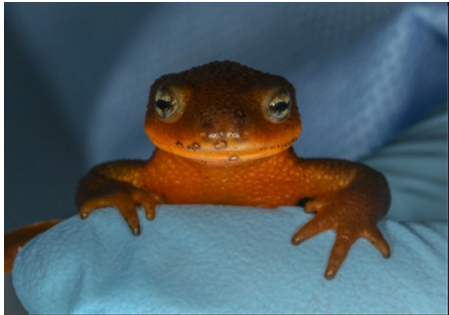
Mark Wilber and colleagues from the Amphibian Disease Lab have published a new paper with the British Ecological Society on amphibian pathogen resistance and tolerance.
Summary
Hosts can defend themselves against infection by avoiding contact with a pathogen, resisting infection when contact occurs, or tolerating the pathogen such that infection does not affect host fitness. When a pathogen invades a host population, what defense strategy should hosts employ to limit the negative impact of the pathogen? For example, if a host is exposed to a high dose of pathogen such that avoidance is difficult, when does it make more sense for a host to invest resources to battle back against the pathogen directly (i.e. resist) or to minimize the physiological harm induced by infection (i.e. tolerate)? Moreover, if a host invests in a resistance or tolerance strategy, what are the mechanisms through which the host implements this defense? Answering these questions is fundamental for predicting and managing the negative impacts of emerging infectious disease on host populations. In this study, we compared the ability of four North American salamander species to resist and tolerate infection with an emerging fungal pathogen of amphibian skin that has caused significant population declines in Europe.
We used lab experiments and mathematical models to ask:
- When is investing in resistance a more effective strategy for preventing disease induced mortality than investing in tolerance? and
- Do the mechanisms of skin sloughing and the reduction of infection-induced skin lesions contribute to resistance and tolerance in these salamander species?
We hypothesized that increasing skin sloughing, a resistance mechanism, would reduce fungal growth on salamanders and that reducing lesions, a tolerance mechanism, would increase salamander survival.
We found that resistance strategies were only more effective at increasing salamander survival when tolerance was low. Otherwise, increasing tolerance was a more effective strategy for increasing survival than increasing resistance. This suggests that different species may invest in different defense strategies when faced with this fungal pathogen. Surprisingly, while we found that the presence of sloughed skin (a proxy for skin sloughing) and the presence of skin lesions were signs of infection, we found little evidence that they were mechanisms of resistance and tolerance, respectively.